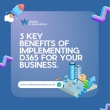You’ve likely heard of NAV Accounting Software, but you might be wondering how it actually works to streamline financial management. At its core, NAV operates as a thorough suite of tools designed to automate and integrate your accounting processes. From real-time reporting to multi-currency support, it’s built to handle complex financial tasks with ease. But there’s more to NAV than meets the eye. Its ability to adapt to your specific business needs and guarantee compliance with financial regulations sets it apart from standard accounting software. To truly understand how NAV can transform your financial operations, let’s explore its key features and functionalities.
Core Financial Management Functions
Boasting an extensive suite of financial tools, Microsoft Dynamics NAV revolutionizes how businesses manage their finances. This all-encompassing accounting software offers a range of core financial management functions that streamline your company’s financial processes. With NAV, you’ll find robust features for tracking accounts payable and receivable, guaranteeing accurate cash flow management, and maintaining tax compliance. Additionally, its dynamic visualization capabilities enhance your ability to interpret financial data effectively.
One of NAV’s key strengths lies in its automation capabilities. The software greatly reduces manual data entry and potential errors by automating critical tasks like invoicing and expense tracking. This efficiency allows you to focus on analyzing financial data rather than inputting it.
NAV’s financial reporting tools are particularly powerful, enabling you to generate customizable reports that provide insights into your company’s financial performance, trends, and forecasts. By integrating with tools like Power BI, you can visualize this data for easier interpretation and decision-making.
Additionally, NAV’s budget management features help you plan, track, and analyze variances, giving you greater control over your financial resources. For businesses operating internationally, NAV’s multi-currency support guarantees seamless management and reporting of finances across different currencies.
Data Integration and Centralization
Microsoft Dynamics NAV’s robust financial management capabilities are built upon a foundation of seamless data integration and centralization. You’ll find that NAV’s architecture allows for the consolidation of data across various business functions, including finance, sales, and supply chain management.
This centralization enables a smooth flow of information throughout your organization, breaking down data silos that can hinder efficiency. By utilizing business intelligence reporting, organizations can further enhance their data-driven decision-making processes, creating a thorough view of their operations.
At the heart of NAV’s data integration strategy is a common database that guarantees you’re always working with real-time data. This means you can make informed decisions based on the most up-to-date financial information available.
NAV’s reporting and analytics tools leverage this centralized data, allowing you to create customized reports that draw from multiple sources within the system. You’ll gain valuable insights into your business performance and trends, helping you stay ahead of the curve.
Moreover, NAV’s role-tailored interfaces guarantee that you and your team members see the most relevant data for your specific functions. This personalized access to centralized information boosts productivity and streamlines workflows, making NAV an indispensable tool for modern businesses seeking to optimize their financial management processes.
Automated Accounting Processes
Through its advanced automation capabilities, NAV accounting software revolutionizes financial processes, freeing you from time-consuming manual tasks. The software’s automated accounting processes greatly reduce manual entry errors and save you valuable time.
With real-time data integration, NAV guarantees that all your financial records are instantly updated, providing accurate cash flow insights at your fingertips. This efficiency in managing financial data is essential for maintaining a robust data security management framework within your organization.
One of the key features of NAV is its automated reporting functionality. You’ll find that generating financial statements, budgets, and forecasts becomes a breeze, enabling you to make informed decisions quickly.
The software’s built-in workflows streamline approvals and processes, automatically notifying relevant stakeholders for timely actions. This efficiency extends to bank reconciliations as well. NAV’s compatibility with various banking systems allows for seamless bank transaction imports, simplifying account reconciliations and enhancing your financial oversight.
Real-Time Financial Reporting
Real-time financial reporting is at the heart of NAV accounting software’s powerful capabilities. Microsoft Dynamics NAV ERP integrates data from various business processes, allowing you to access up-to-date financial information at any moment. This feature guarantees that you’re always working with the most current data, enabling informed decision-making and quick responses to market changes.
The software’s customizable dashboards display key financial metrics, giving you a clear overview of your company’s performance. You can easily generate essential financial reports, such as profit and loss statements, balance sheets, and cash flow statements, with just a few clicks.
NAV’s reporting tools support multi-dimensional analysis, allowing you to evaluate financial data across different dimensions like departments, projects, or time periods.
To enhance your reporting capabilities, NAV integrates with Power BI, enabling you to create interactive visualizations and conduct in-depth analyses of your financial data in real-time. This powerful combination of features guarantees that you have access to thorough, accurate, and timely financial insights, empowering you to make strategic decisions and drive your business forward.
Customization and Scalability
A key strength of NAV accounting software lies in its customization capabilities and scalability. Microsoft Dynamics NAV allows you to tailor the software to your specific business needs, guaranteeing that you’re not paying for features you don’t use while still having access to essential tools for financial management and other operations.
You can customize modules, create personalized dashboards, and generate reports that focus on the key performance indicators most relevant to your roles.
As your business grows, NAV’s scalability becomes vital. You can add users and functionalities without major disruptions, adapting the software to your expanding needs.
The system’s architecture also supports integration with third-party applications, enhancing its versatility and allowing you to create a more all-encompassing business solution.
Microsoft’s commitment to regular updates guarantees that NAV remains flexible and aligned with evolving industry standards. This ongoing development means you’re always working with a system that can accommodate changing business environments and user requirements.
User Roles and Access Control
NAV accounting software sets up a robust system of user roles and access control, guaranteeing that your organization maintains tight security over its financial data. The system allows you to customize user roles based on specific job functions, granting employees access only to the modules and information they need for their tasks. This role-based security approach enhances data integrity and compliance within your organization.
As an administrator, you can create and manage user profiles, defining permissions for various modules such as financial management, inventory control, and project management. This granular control over access rights helps prevent unauthorized data manipulation and makes certain that sensitive information remains protected.
NAV’s user-friendly interface makes it easy for your employees to navigate the system while adhering to established access controls.
The software also supports monitoring and auditing of user activities, allowing you to track actions within the system and maintain accountability. This feature is essential for identifying potential security breaches and guaranteeing compliance with regulatory requirements.
Compliance and Audit Trail Features
Building on the robust security features, Dynamics NAV’s compliance and audit trail capabilities guarantee your organization meets regulatory requirements while maintaining transparency.
Microsoft Dynamics NAV includes extensive tools to ascertain adherence to financial regulations and standards, facilitating tax compliance and reporting accuracy. The software’s audit trail functionality meticulously logs all financial transactions, tracking who made changes, when they occurred, and what data was altered. This level of detail enhances accountability and provides essential information for compliance reviews.
You’ll find that NAV’s built-in reporting tools support your compliance needs by generating customizable reports that align with regulatory standards. These reports prove invaluable during audits, offering clear and accurate financial data.
As regulations evolve, Microsoft regularly updates NAV to keep pace with changing industry standards, ascertaining your software remains compliant. By utilizing NAV’s compliance and audit trail features, you’ll maintain a high level of financial integrity and transparency.
This not only satisfies regulatory bodies but also instills confidence in stakeholders, demonstrating your commitment to sound financial practices and accountability.
Cloud-Based Accessibility and Updates
One of the most significant advantages of modern NAV software is its cloud-based accessibility. As Microsoft Dynamics 365 Business Central, it allows you to access financial data and manage operations from any internet-connected device. This flexibility enhances your ability to stay on top of your business, regardless of location.
Cloud-based NAV solutions offer automatic updates, ensuring you’re always using the latest features and security enhancements without manual installations. This not only saves time but also keeps your system current and protected.
The cloud model facilitates real-time data sharing, promoting collaboration among teams across different locations. You’ll find that this improves communication and decision-making processes.
Another key benefit is the scalable capabilities of cloud-based NAV. As your business grows, you can easily expand your NAV functionality without significant hardware investments or complex setups.
The integration with other Microsoft cloud services further enhances your user experience, streamlining workflows through connected applications. This interconnectivity allows for a more efficient and productive accounting environment, ultimately improving your overall business operations.























